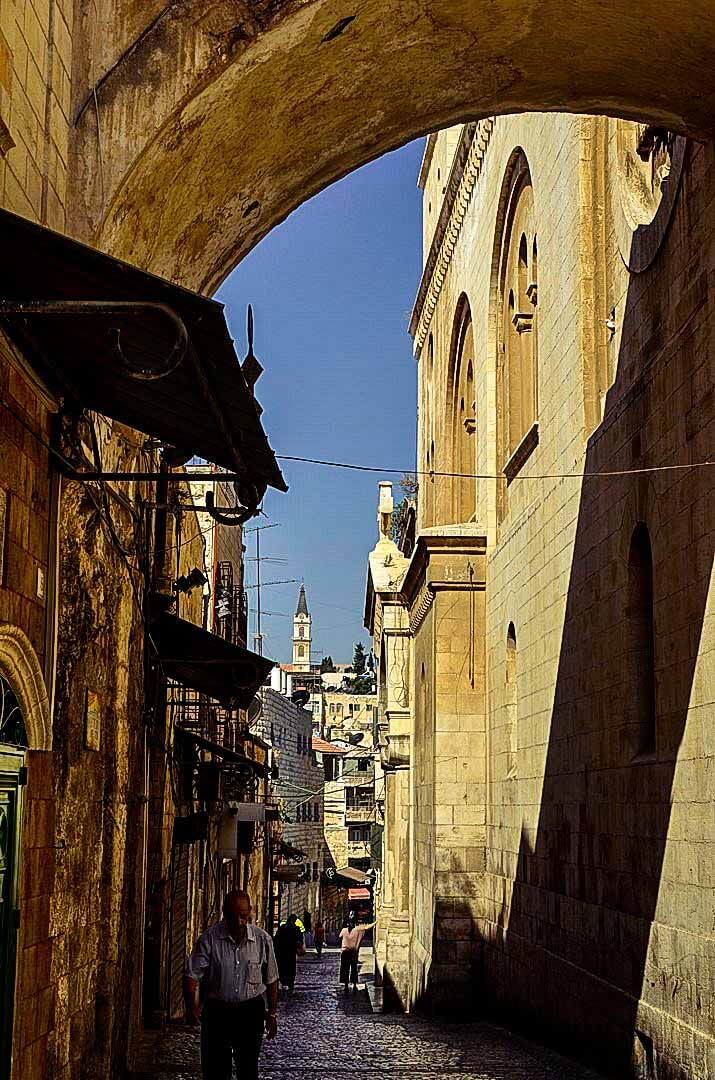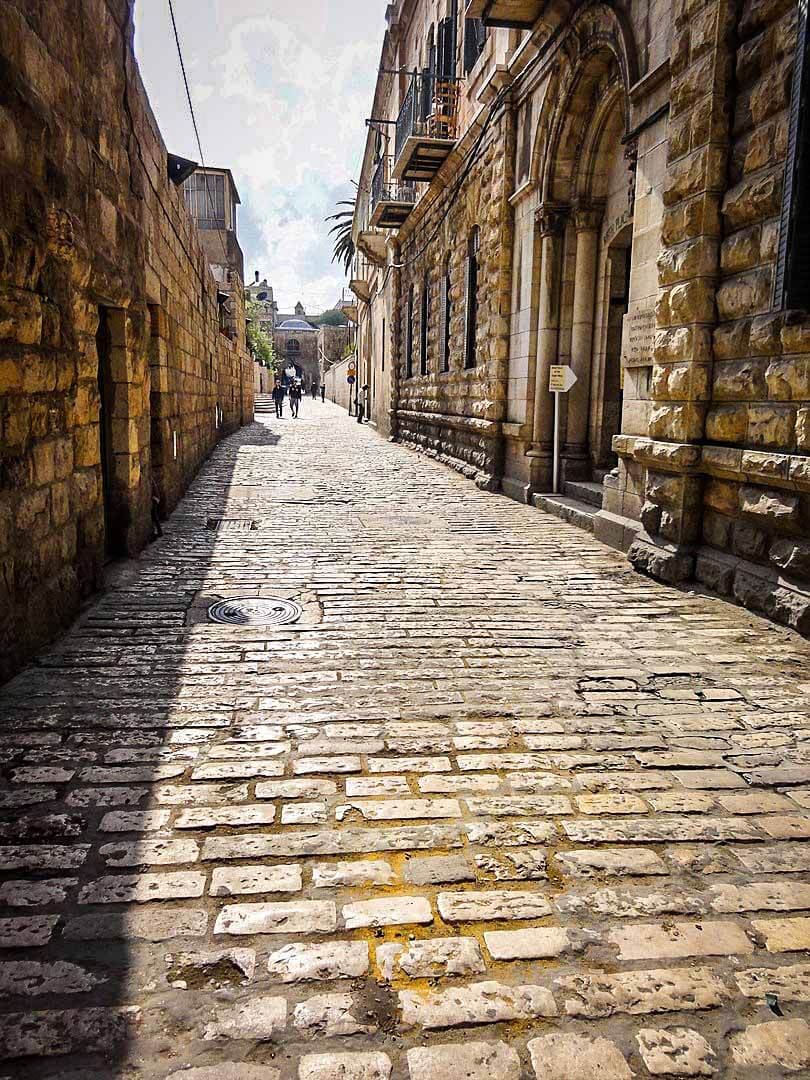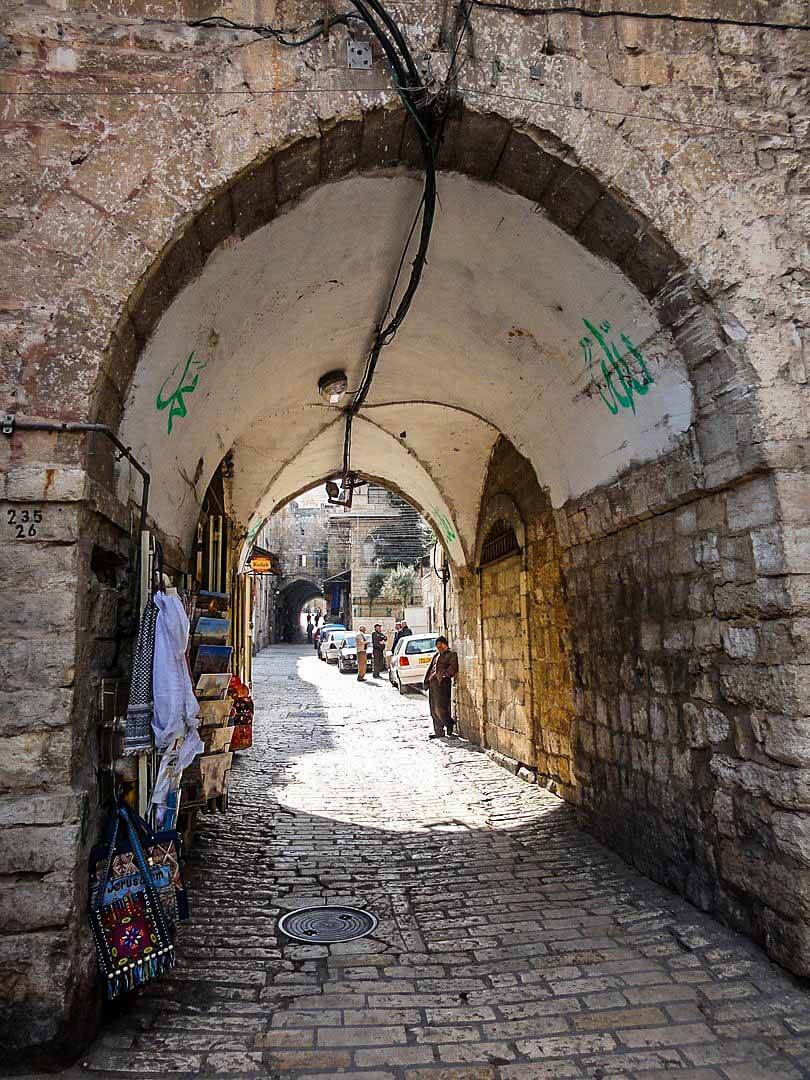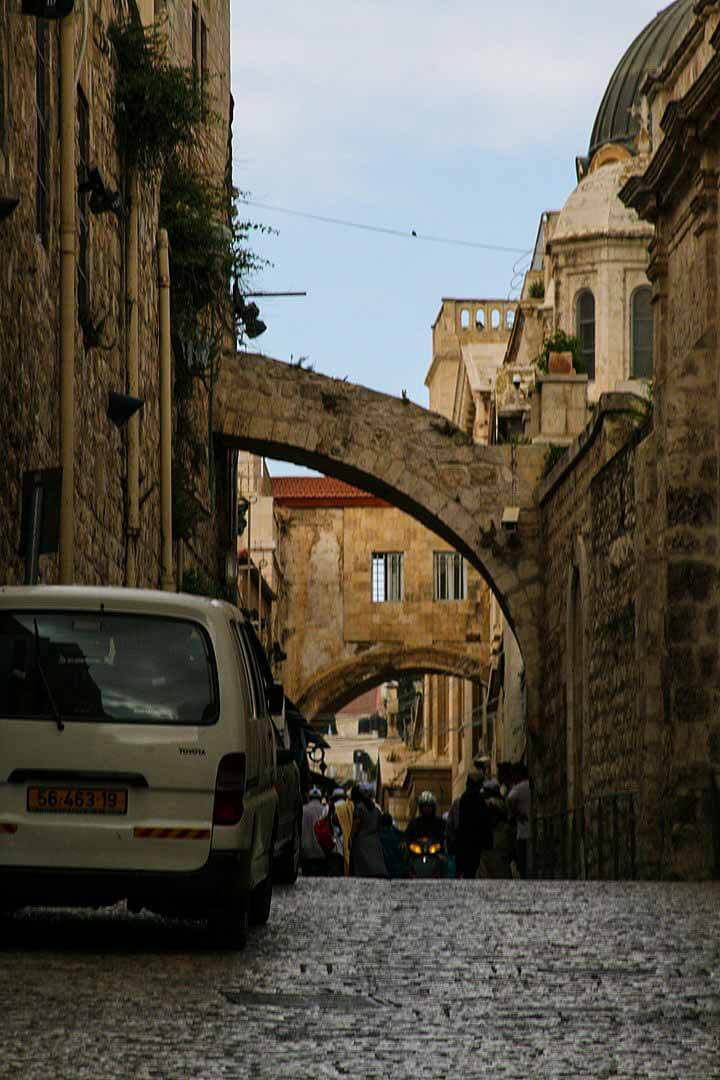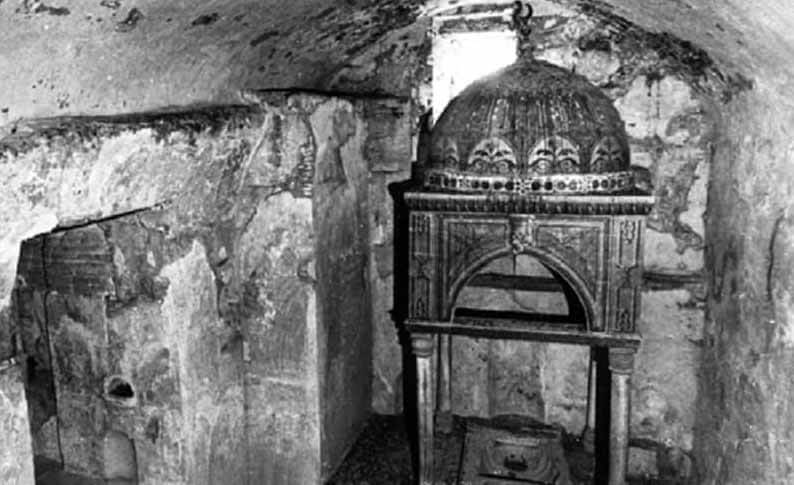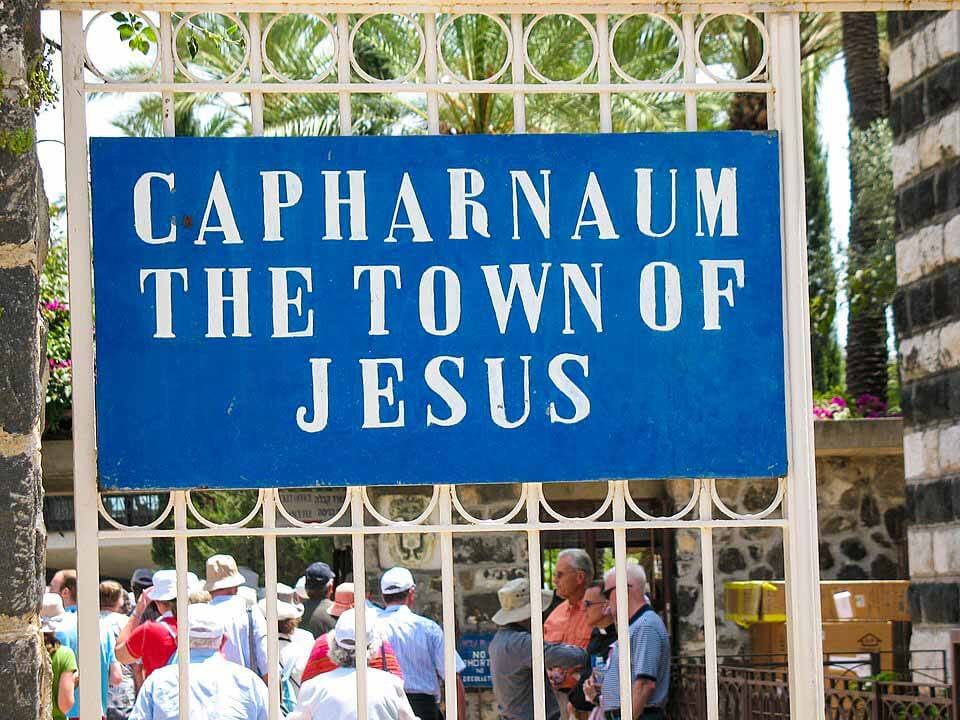Jerusalem, Palestine
Coordinates: 31.779410, 35.231708
Also known as Tareeq al-Alaam, Via Dolorosa (“Sorrowful Way”, “Way of Suffering”) is a processional route in the Old City of Jerusalem (Palestine), believed to be the path that substitute (double) of Hz. Isa عليه اسلام walked on the way to his crucifixion.
The current route has been established since the 18th century, replacing various earlier versions.
It is today marked by nine Stations; there have been fourteen stations since the late 15th century, with the remaining five stations being inside the Church of the Holy Sepulchre.
The Via Dolorosa is not one street, but a route consisting of segments of several streets.
The winding route from the former Antonia Fortress, now al-Umariyya School, to the Church of the Holy Sepulchre — a distance of about 600 metres (2,000 feet) is a celebrated place of Christian pilgrimage.
The current route has been established since the 18th century, replacing various earlier versions.
Each Station of the Cross is marked with a small Roman numeral plaque, which can be easy to miss. It is a good idea to take a map with you. Or you can join the Friday procession that takes place weekly, or take a guided tour.
2,000 years of development along the Via Dolorosa has camoflaged and, in some places, obliterated the original route.
In fact, the final three of the fourteen Stations are now all located in one place: outside the Church of the Holy Sepulchre (rather than in the original locations which are inside or underneath the Church itself).
It is best to go in the very early morning, before the shops and stalls of the Old City fully come to life in order to experience the Via Dolorosa in its best light and with a minimum of current, modern distraction.
Stations of Via Dolorosa (all are according Christian Traditions and beliefs)
Station 1: Duplicate’s condemnation by Pontius Pilate, believed to have occurred at the site of Madrasa al-Omariya, 300m west of the Lion’s Gate.
Station 2: Where duplicate of Hz. Isa عليه اسلام was handed his cross, located next to the Franciscan Monastery of the Flagellation.
Station 3: Where duplicate of Hz. Isa عليه اسلام fell for the first time under the weight of his cross.
Station 4: Where Bibi Maryam رضي الله عنها watched Duplicate of Hz. Isa عليه اسلام pass by carrying the cross.
Station 5: The place where Roman soldiers forced Simon of Cyrene to help the duplicate of Hz. Isa عليه اسلام carry his cross.
Station 6: The spot where, St. Veronica wiped the duplicate’s face with a cloth.
Station 7: Where duplicate of Hz. Isa عليه اسلام fell for the second time. This is marked by a Franciscan chapel.
Station 8: A cross of Greek Orthodox Monastery of St. Charalambos mark the place where duplicate of Hz. Isa عليه اسلام consoled the weeping and mourning women of Jerusalem.
Station 9: The Coptic Patriarchate next to the Church of the Holy Sepulcher. Here, a Roman pillar marks the site of duplicate’s third and final fall.
Station 10: The duplicate was stripped here. Top of the stairs to the right outside the entrance.
Station 11: The duplicate is nailed to the cross upstairs just inside the entrance.
Station 12: The duplicate died on the cross – Rock of Golgotha in the Greek Orthodox Calvary.
Station 13: The duplicate is taken down from the cross – Statue of Our Lady of Sorrows next to the Latin Calvary.
Station 14: The duplicate is laid to rest in the tomb, inside the altar on the main floor.
Note: Some of the information in this article comes from Christians sources.
Before reading the following article it is highly recommended to read "Views of Islamic Scholars on ascension of Hz. Isa عليه اسلام




